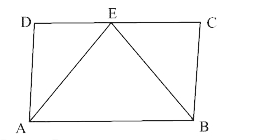In the given figure, if ar(ΔABC)=28 cm2 thenar(AEDF) =
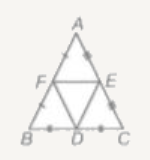
A
21 cm2
B
18 cm2
C
16 cm2
D
14 cm2
Video Solution
Text Solution
The correct Answer is:D
|
Answer
Step by step video & image solution for In the given figure, if ar(DeltaABC)=28" cm"^(2) then ar ( AEDF) = by Maths experts to help you in doubts & scoring excellent marks in Class 9 exams.
Updated on:21/07/2023
Topper's Solved these Questions
Similar Questions
Knowledge Check
- Question 1 - Select One
In figure, if ar(ΔABC) = 28 cm2, then find ar( IIgm AEDF).
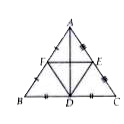 A21 cm2B18 cm2C16 cm2D14 cm2
A21 cm2B18 cm2C16 cm2D14 cm2 - Question 2 - Select One
In the given figure area of IIgm (DEFG) =40cm2, then ar (HDG) + ar (HEF) =?
A10cm2B20cm2C30cm2D40cm2 - Question 3 - Select One
In the given figure ar (ΔABC)= ar (ΔADE). AC is the median of ΔADE. If ar (ACE) =14cm2 then ar (ΔABC) = ?
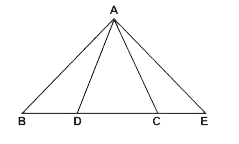 A14cm2B7cm2C21cm2D28cm2
A14cm2B7cm2C21cm2D28cm2
In the given figure, DE || BC, DE= 3 cm, BC = 9 cm and ar (DADE) = 30cm2. Find ar (BCED).
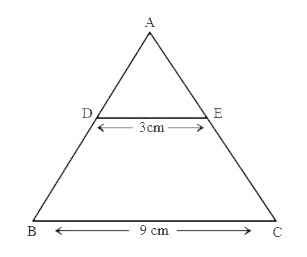 View Solution
View SolutionLet ΔABC−ΔDEF,ar(ΔABC)=169cm2andar(ΔDEF)=121cm2. If AB = 26 cm thhen find DE.
View SolutionIn ΔABC~ΔDEFandar(ΔABC)=100cm2,ar(ΔDEF)=196cm2andDE=7cm, then find AB.
View SolutionIn the figure ABCD and ABFE are Parallelograms then find ar (ΔBCF).
If ar (ABCE)=18cm2
ar (ABCD)=25cm2
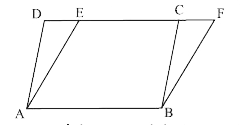 View Solution
View SolutionIn the given figure, ΔABCandΔDBC have the same base BC. If AD and BC intersect at O, prove that ar(ΔABC)ar(ΔDBC)=AODO
 View Solution
View Solution


